On 5 May, 1945, during the last months of WWII – the war in Europe was just coming to an end – an American B-29 airplane went down over Fukuoka, Japan. The highest ranking surviving soldier was brought to Tokyo for further interrogation. The other eight survivors were brought to the Department of Anatomy of the University of Fukuoka. There they were subjected to medical “experiments” that were carried out without anesthetics by Unit 731 under its commander General Shiro Ishii and with the support of several doctors and nurses from Fukuoka Hospital.
The so-called “experiments” for which Unit 731 was notorious were so gruesome that they can be only compared with those of Dr. Dr. Mengele in Auschwitz. A biography of Ishii mentions an example of the “scientific” experiments of Unit 731:
“To determine the treatment of frostbite, prisoners were taken outside in freezing weather and left with exposed arms, periodically drenched with water until frozen solid. The arm was later amputated; the doctor would repeat the process on the victim’s upper arm to the shoulder. After both arms were gone, the doctors moved on to the legs until only a head and torso remained. The victim was then used for plague and pathogens experiments.” (Byrd, Gregory Dean: General Ishii Shiro)
In the case of the American soldiers, the vivisections meant that inner organs were consecutively extracted in order to see how long the soldiers would survive. It was murder with a so-called “scientific” alibi and under the cruelest conditions you can possibly imagine (no use of anesthetics, as already mentioned!). All prisoners died after unimaginable suffering.
Japanese novelist Shusaku Endo was one of the first authors to shed a light on Japan’s moral guilt for the war crimes committed by Japanese soldiers, but also by respectable medical doctors, nurses and scientists. His novel The Sea and Poison is based on the Fukuoka crime.
The narrator of the novel that is set in Japan in the 1950s, is a man with a lung disease (just like Endo himself who suffered from tuberculosis and who had a part of his lung removed). He is treated successfully by a Dr. Suguro, an unfriendly and uncommunicative man with a swollen face that looks somehow creepy. But he is obviously a good professional in his field. The narrator investigates out of curiosity about Dr. Suguro and meets someone who knows the past of this strange person.
Dr. Suguro was during the war part of the team of doctors and nurses that carried out the vivisections in Fukuoka. During that time Suguro was a young practitioner at a hospital. One of the first surgeries after he starts his duties in Fukuoka Hospital and in which he participates, is the lung operation of an old woman, a welfare patient. The operation is not necessary from a medical point of view and it will end with the death of the woman, but since she is “only” a welfare patient and will probably die anyway from her disease, the responsible doctor is not hesitating to use her (without her knowledge or even consent) for this human experiment in the name of a very doubtful “scientific progress”,
Suguro finally gives in to participate in this surgery which is supposed to bring at least some more scientific results and might help to find a better treatment for similar cases in the future. Suguro is shocked and devastated by what he sees and he shows compassion to the woman before the surgery. Sometimes he is giving her extra food when nobody watches. But he, the young practitioner doesn’t stand up to the driving force behind this completely useless and lethal surgery: Dr. Toda, the main surgeon, wants to make a career for himself and for this he needs to have under all circumstances a big number of surgeries performed. That in many cases these surgeries will end necessarily with the death of the patient, is not a matter of concern to Dr. Toda. Welfare patients seem to be not fully human to him, interesting only as human “material” and as long as it is in the name of “science” (i.e. his personal ambition), anything is in the right order for him.
Toda is in many ways the complete opposite of Suguro. He is talkative, over-ambitious, and he enjoys exercising power, a fact that results also in a constant bickering directed at Suguro, who has moral scruples and choose this profession obviously out of the real wish to help people, not to make a career at all costs. But Suguro is weak and he collapses morally. Japan, like Germany, was not a society where subordinates were used to doubt or even to stand up to their superiors or any higher authority when receiving orders that were ethically doubtful or inhumane.
A minor figure but nevertheless an important character in the book is the nurse Ueda with a rather unhappy personal history. She is more passive and chose this profession neither out of enthusiasm nor out of the wish to make a career. But her unhappy private life and frustrated pre-disposition together with her experience in Manchuria have taught her to follow orders and how to deal with “inferior” people and races. She is participating in the operation without enthusiasm but also without sign or even thought of rebellion against this unnecessary and lethal surgery.
When the surviving American soldiers are brought to the hospital, it is again Toda who takes the initiative. The post of the deacon of the faculty is vacant and the spectacular vivisections will be the perfect opportunity for him to bring himself in position for this important job. None of the doctors and nurses who participate in the vivisections because Toda puts some pressure on them rejects this request and so these “scientifically” disguised crimes take place under the hands of doctors whose profession it should be to protect and save lives.
I don’t think that Endo wanted to write a kind of documentary novel that was meant to expose the terrible crimes of a part of the Japanese doctors and medical staff during WWII, and I also don’t think that Endo should be blamed for not writing in very much detail about the sufferings of the American soldiers, or for changing some details in his novels compared to the reality, such as the use of anesthetics (which were not used during the real vivisections of the soldiers). It’s a novel after all and any author is entitled to change or adapt certain details when it suits him – otherwise he should write a report, not a novel.
We can assume that Endo’s readers in Japan were (just like the author himself) aware of the details of this case, which were reported in length by all Japanese newspapers during the trial of 1948 against some doctors and medical staff. We can only guess why he introduced the use of anesthetics contrary to the real story. It might be simply for the pragmatic reason not to shock the readers more than necessary, it might be a concession to the publisher, it might be even considered as an act of compassion toward the victims of this crime. And that he doesn’t describe the graphic details of the vivisections has also to be seen in the framework of the artistic tradition of Japan.
It is a constitutional moment of many Japanese novels and movies to make extensive use of the ellipsis as a narrative device (think of Kurosawa’s or Ozu’s movies). It’s more important to see that there are doctors and nurses that have a profession that is aiming to heal people – and they come together to commit a number of sadistic murders. As for the sufferings of the victims, it is left to the readers’ imagination. No need to describe something that would have more similarity with a splatter movie than with the situation in any normal hospital in the world.
It has to be mentioned that Endo was a catholic author. He lived several years in France and was familiar with the work of authors like Bernanos or Mauriac. Additionally he was suffering from tuberculosis and had to undergo surgery to remove one of his lobes. So we can suggest that he had a lot of his own experiences with doctors and hospitals flow into this novel, as well as his views on the freedom of will and personal ethical responsibility for one’s actions.
In my opinion, the three main characters in the book are based on typical representatives for different approaches of people working in hospitals or in the medical profession in general. There are the ones that choose this profession out of the genuine wish to help other people and to render a valuable service to mankind (like Suguro). For others (like Ueda) it is just a profession like any other. And for a number of people (like Dr. Toda) it is an instrument to display power, a vehicle for their personal ambition, a place where they can use any means that suits the only aim that matters: to rise in the hierarchy, to gain more recognition, prestige, money, and power for themselves.
The main question for Endo seems to be: where are the ethical limits for the work of a doctor or medical professional? The surgery that the welfare patient has to suffer is completely useless, will not help her, cure her disease or make her life more comfortable. In the contrary it will kill her. But since she is a welfare patient, she seems to be the suitable ‘material’ to gain at least some (very doubtful) additional knowledge that might help to cure similar diseases in the future more efficiently. (At least this is the alibi that the doctors make up for themselves.) It is clear that already this case shows a complete lack of humanity from the side of the doctors and is against all ethical principles of medicine. And it is also obvious that doctors or nurses that are already so morally compromised to perform such surgeries will not protest against any order to undertake vivisections on prisoners that have absolutely no medical justification and are simply a cruel form of murder.
For me this is clearly a book about the importance to act according to ethical principles under all conditions. Just as the way to Auschwitz started when people were not protesting against the boycott of the shop of their Jewish neighbor, the way to the ‘medical’ experiments of a Dr. Dr. Mengele started when people were not protesting against the declaration of certain people as being ‘lebensunwert’ (not worth living).
Considering today’s discussions about reproduction medicine or euthanasia in many countries, or the participation of medics in the torturing of prisoners in Guantanamo or elsewhere, the question of individual ethical responsibility of doctors is as acute as ever. Therefore Endo’s disturbing but important novel, as depressing as the story is, has lost nothing of its urgency and strength.
Postscriptum:
The real doctors and nurses that participated in the Fukuoka vivisections were sentenced to death or very long prison sentences in 1948.
General MacArthur, the military commander of Japan commuted all death sentences and reduced the prison sentences considerably.
In 1958 all Fukuoka killers were free again. Most of them held later high positions in medicine, science, and the pharmaceutical industry in Japan.
Emperor Hirohito, who created Unit 731 and who was fully aware of the biological warfare and human experiments and who encouraged the deeds of this Unit, never saw a court.
General Ishii – still today considered a hero by many Japanese – received immunity for his crimes in return for delivering the results of his “scientific research” to the Americans(!).
Results of the biological human experiments of Unit 731 were used in the US and the Soviet Union for their respective military Biological Warfare programmes.
The Japanese Supreme Court confirmed in 2007 that victims of Unit 731 or their family members are not entitled to any financial compensation.
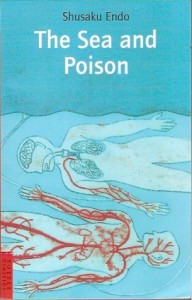
Shusaku Endo: The Sea and Poison, transl. Michael Gallagher, Tuttle Publishing, Rutland Tokyo 1991
On the Fukuoka case:
Marc Landas: The Fallen. A True Story of American POWs and Japanese Wartime Atrocities, Hoboken, John Wiley 2004
On Unit 731:
Peter Williams, David Wallace: Unit 731 – Japans Secret Biological Warfare in World War II. Hodder and Stoughton Ltd., London 1988
Sheldon H.Harris: Factories of Death. Japanese Biological Warfare, 1932–1945, and the American Cover-up. Routledge, New York 2002
Toshiyuki Tanaka, Yukiko Tanaka: Hidden Horrors: Japanese War Crimes in World War II, Westview Press Inc. 1998
On similar cases in Nazi Germany:
Alexander Mitscherlich / Fred Mielke (eds.): Medizin ohne Menschlichkeit (‘Medicine without Humanity’), Fischer, Frankfurt am Main 2009
Ernst Klee: Auschwitz, die NS-Medizin und ihre Opfer (‘Auschwitz, NS Medicine and its Victims’), Fischer, Frankfurt am Main 2012
Robert J. Lifton: The Nazi Doctors, Macmillan, London 2000
© Thomas Hübner and mytwostotinki.com, 2014. Unauthorized use and/or duplication of this material without expressed and written permission from this blog’s author and/or owner is strictly prohibited. Excerpts and links may be used, provided that full and clear credit is given to Thomas Hübner and mytwostotinki.com with appropriate and specific direction to the original content.

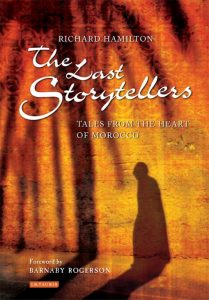
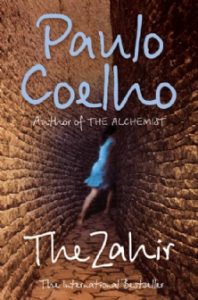
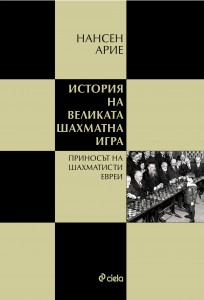
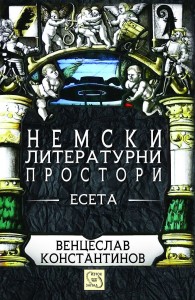
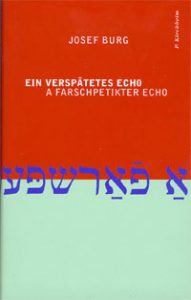



 Facebook
Facebook RSS
RSS Twitter
Twitter